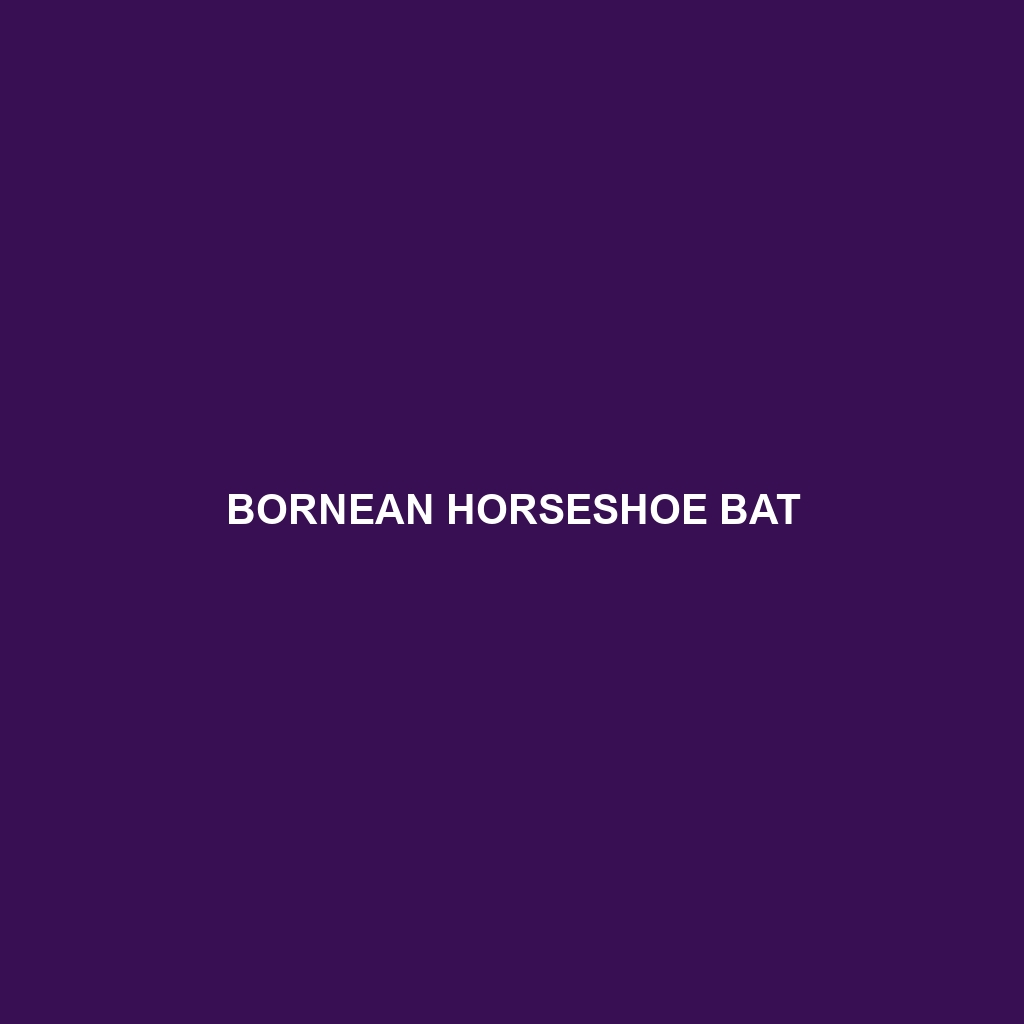Bokhara Horseshoe Bat ()
Common Name: Bokhara Horseshoe Bat
Scientific Name:
Habitat
The Bokhara Horseshoe Bat is primarily found in arid and semi-arid regions across Central Asia, particularly in countries like Kazakhstan, Uzbekistan, and Tajikistan. This species prefers habitats that include rocky crevices, caves, and buildings where they can roost and raise their young, taking advantage of the varied geography of their environment. Adapted to live in temperate climates, they are often seen in areas with access to water and ample insect populations.
Physical Characteristics
Bokhara Horseshoe Bats are medium-sized bats, typically measuring around 6 to 10 centimeters in body length, with a wingspan that can reach up to 30 centimeters. Their fur is generally a warm brown color with a lighter underside, providing excellent camouflage against rocky backgrounds. A distinct feature of this species is the horseshoe-shaped nose leaf that aids in echolocation, facilitating their nighttime hunting prowess.
Behavior
These bats are nocturnal, becoming active during the night when they forage for food. They exhibit a unique social structure, often roosting in small colonies that provide protection from predators. The Bokhara Horseshoe Bat is known for its agile flight, making sharp turns to capture insects mid-air. During the day, they tend to rest in less disturbed areas, often within the cool confines of caves or buildings.
Diet
The Bokhara Horseshoe Bat primarily feeds on insects, with a diet consisting of moths, beetles, and flies. This bat uses echolocation to locate its prey in the dark, showcasing its remarkable sensory adaptations. Their feeding habits play a crucial role in controlling insect populations, contributing to the ecological balance within their habitat.
Reproduction
Breeding typically occurs in the late spring, with female Bokhara Horseshoe Bats giving birth to one or two pups after a gestation period of about 50 to 60 days. Pups are born hairless and rely on their mothers for nourishment and care. As they grow, they begin to learn to fly and hunt alongside their mothers, generally becoming independent by late summer.
Conservation Status
The Bokhara Horseshoe Bat is currently classified as “Vulnerable” on the IUCN Red List due to habitat loss and decline in insect populations, affecting its survival. Conservation efforts are necessary to protect their natural habitats and ensure that they can thrive in the wild.
Interesting Facts
– The Bokhara Horseshoe Bat has an extraordinary ability to navigate through dark environments, using its echolocation skills.
– They can live up to 15 years in the wild, showcasing their resilience to environmental changes.
Role in Ecosystem
As pollinators and predators of insects, the Bokhara Horseshoe Bat plays a vital role in maintaining ecological balance. Their feeding habits help control insect populations, while their presence indicates the health of their habitat. By participating in this ecological cycle, they contribute to the overall biodiversity of their environment.
